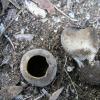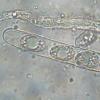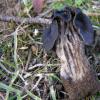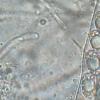
12-11-2025 09:25
 Viktorie Halasu
Viktorie Halasu
Hello, I need help with a pale terrestric Pseudom

11-11-2025 20:16
Bohan JiaHi, lastly I have found these tiny yellow decayin

09-11-2025 13:20
Hello.A tiny ascomycete, appearing as erupting gra

08-11-2025 00:29
 Francois Guay
Francois Guay
I found this species in Quebec, Canada, on herbace
Helvella sp. ?
VASILEIOS KAOUNAS,
28-02-2008 08:08
It was found in forest Pinus halepensis and pistacia lentiscus.
In the region Schinias-Attiki-Greece, 25-2-08
VASILEIOS KAOUNAS,
28-02-2008 08:10
VASILEIOS KAOUNAS,
28-02-2008 08:13
Nicolas VAN VOOREN,
28-02-2008 08:13

Re:Helvella sp. ?
Yes, no problem for the first species.
Nicolas VAN VOOREN,
28-02-2008 08:15

Re:Helvella sp. ?
For the second one, please give us microscopic features (spore size, spore shape, etc.).
VASILEIOS KAOUNAS,
28-02-2008 08:15
Mario Filippa,
28-02-2008 14:52
Re:Helvella sp. ?
The second species may be Helvella juniperi. The macroscopical appearance is similar to Helvella lacunosa, but normally the ribs of the stipe have blunt edges. The spores longer than 20-21 microns and in good proportion subcylindrical are also typical. You should control the ectal excipulum in a thin section. The ectal excipulum in H. juniperi is thick about 200 microns and made up of chains of inflate cells; in H. lacunosa is thinner (80-120) and with the terminal cells +- clavate and bigger than others.




